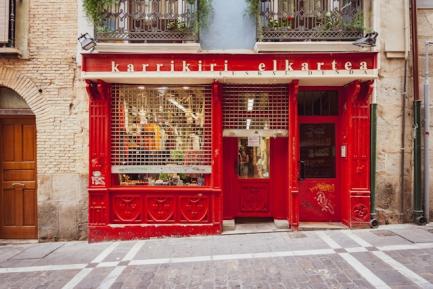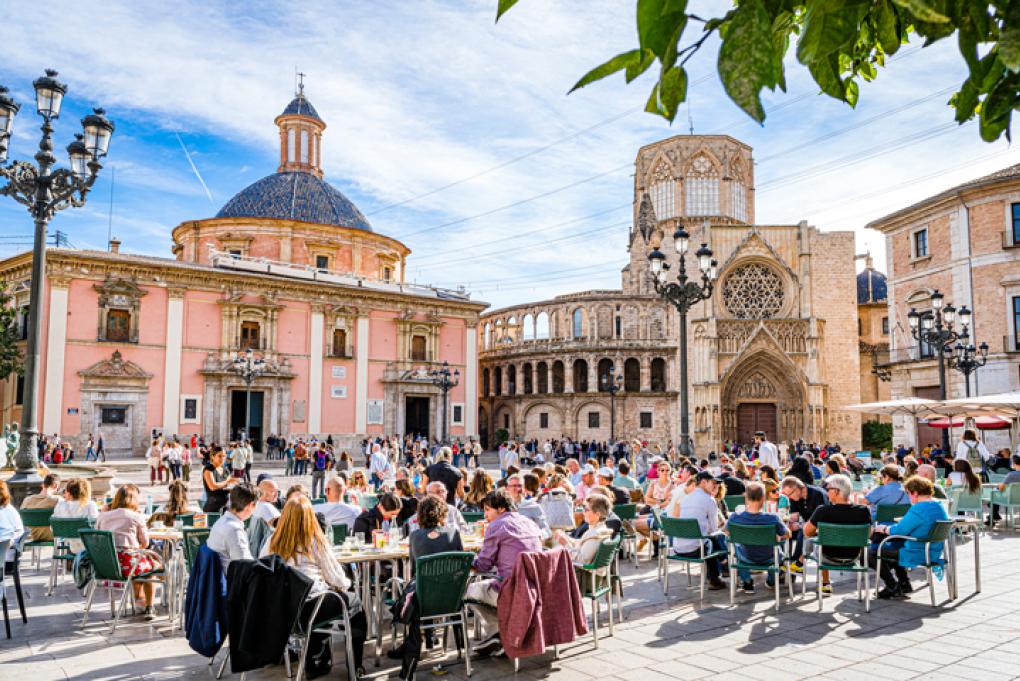The factors that lie behind tourism’s price rises
The tourism industry is no stranger to inflationary shock. Tourism-related prices are growing strongly and, specifically, the hotel sector is posting price rises well above the historical average. As is often the case, there is no single reason for this inflation in tourism but rather a compendium of changes in both supply and demand that have resulted in tourists having to pay much more than before the pandemic. In this article we look at the factors that lie behind this episode.

In the Spanish economy’s current inflationary cycle, which is mainly due to rising energy and food prices, the tourism industry has also played a leading role. According to CPI figures, the cumulative rise in prices for services linked to tourism (accommodation, hospitality, leisure and passenger transport) was 17.9% between May 2019 and May 2023, somewhat larger than the rise posted by fuel prices over the same period (+13.6%).
Within the tourism industry, the link in the value chain that has seen the greatest increase in prices has been the hotel sector. According to data from the Hotel Price Index (HPI) of the Hotel Occupancy Survey, in 2022 prices rose by 16.8%, well above the historical average and, in the first five months of 2023, this rate of increase remained in double digits (+10.2%). Prices have risen in general across the sector although there’s one aspect in particular that has intensified this trend: the category (or number of stars) of the hotels. As can be seen in the chart below, the higher the category of hotel, the higher the inflation rates, these reaching year-on-year growth of 26% for top category hotels over the period from January to May.
According to data from the Hotel Price Index (HPI) of the Hotel Occupancy Survey, in 2022 prices rose by 16.8%, well above the historical average
The upward trend in hotel prices began in March 2022, just after the war in Ukraine erupted and also coinciding with the beginning of the strongest phase in the recovery of tourism since the start of the pandemic. In other words, the hotel market suffered from a supply shock (via costs) and a demand shock, both of which were particularly intense and pushing in the same direction: price rises.3 As can be seen in the chart below, the average daily rate (ADR) went from just 4.7% higher in February 2022 than in the same month of 2019 to 16.8% higher than in August 2019. During the latter part of 2022, and despite the fact that the episode of energy price tensions had eased and the level of tourism demand had normalised, prices continued to escalate. In May this year, the ADR was 23.2% higher than its May 2019 level. So what lies behind this growth in hotel prices?
- 3. It has also been proposed that some of the hotels reopened after the pandemic after having made investments, so that part of this price hike would be due to improvements made in infrastructure.
The hotel market suffered a supply shock (via costs) and a demand shock, both of which were particularly intense and pushing in the same direction: price rises
If we analyse the structure of intermediate consumption in tourist accommodation, we can see that, over and above the sector’s exposure to energy costs, its sensitivity towards food product and construction costs also seems to have been crucial. According to data from the National Statistics Institute, in 2019 the accommodation sector spent 6% of its revenue on buying agrifood products and 9% on construction and real estate services, but only 3% to pay its energy bills. In this respect, the cost shock in the sector would not have ended after energy prices got back to normal since the tensions in food prices are still having an effect today and construction prices are still very high, despite the fact that the latest data point to them stabilising. If we compare current food and construction prices with those of two years ago (before the beginning of the inflationary episode), according to the industrial price index (IPRI) for May, over this two-year period food prices have grown by 28% and beverages by 17%. Meanwhile, according to data from the Ministry of Transport, Mobility and Urban Agenda, construction costs grew by 18.3% between April 2021 and April 2023.
The cost shock in the sector would not have ended after energy prices got back to normal since the tensions in food prices are still having an effect today and construction prices are still very high

On the other hand, it should be noted that the major cost for the sector is not to be found among the consumption of intermediate goods but in labour costs. As shown in the previous chart, the relative weight of labour costs in 2019 was equivalent to 29% of the sector’s total revenue. The sector is therefore exposed to the risk that wage growth could intensify significantly, given the current inflationary environment and pressures to restore workers’ purchasing power as soon as possible rather than over a somewhat longer time frame. While this risk does not seem to have materialised for the time being, it may have helped to push up hotel prices due to expectations: faced with the risk of steep wage rises in 2023 because of the inflationary environment, hotel managers may have marginally raised their prices in 2022 as a precautionary measure. As long as these risks don’t materialise, and as suggested by the most recent data, this should help to contain further price hikes.
The most recent data provided by CaixaBank’s wage indicator, which shows the median change in the wage income of its customers, indicate that wages in the tourism industry grew by 5.0% year-on-year in June, remaining relatively stable at this level since March. This stabilisation is a good sign and will help to shift market expectations away from the possibility of significant second round effects.
According to the National Statistic Office’s Hotel Occupancy Survey, the hotel occupancy rate recovered quickly in 2022 but failed to equal its 2019 figures at any time
Along with the cost shock, the other factor that could explain the rise in prices is the incredibly strong demand. According to statistics from the National Statistics Office’s Hotel Occupancy Survey, the hotel occupancy rate recovered quickly throughout 2022 but failed to equal its 2019 figures at any time. For instances, an average occupancy rate of 75.4% was achieved in August 2022, slightly below that of the same month in 2019 (76.9%). It should be noted that, as of January 2023, the occupancy rate did exceed the pre-pandemic records, albeit only slightly (in April the occupancy rate stood at 59.8%, a mere 1.6 pp higher).
Given these figures, we cannot claim that the rise in prices has been fuelled by greater occupancy in the market than usual. However, we believe there’s more subtle evidence of pressure from demand: namely its resilience in spite of the rising prices. We can see a demand shock when we compare the hotel occupancy figures with the sharp rise in prices (recall that, in 2022, ADR was more than 15% above the 2019 level). Consequently, it’s very likely that, if there hadn’t been a change in demand conditions (pent-up demand, a preference for travel in Europe by EU tourists, a preference for domestic tourism among Spaniards, etc.), occupancy rates would have reached similar levels to those observed given the price hikes we’ve experienced.
To illustrate the extent to which supply and demand shocks have changed the historical relationship between prices and demand in the hotel market, we’ve carried out a very simple statistical exercise, shown below in the charts. Based on the historical relationship between the occupancy rate and ADR, controlling for hotel category, we’ve calculated the price that would’ve been seen in a market with post-pandemic occupancy rates if there hadn’t been any supply or demand shocks.4 From the differences between the estimated ADR and the observed ADR, we can quantify the change in market conditions that has been caused, on the one hand, by cost shocks in the sector (energy, construction, food and expected wage increases) and, on the other, by the demand shock of a change in preference among domestic and EU tourism, as well as the impact of pent-up demand.
- 4. We’ve estimated the following regression: ADRt = α + β1 foreign occupancy ratet + β2 resident occupancy ratet + ξt, estimated with data between January 2017 and December 2019. With this estimate, we’ve calculated the projected ADR for January 2020 onwards and attributed the error in the forecast (ξt) to shocks in supply (costs) and demand (preferences).
Based on the historical relationship between the occupancy rate and ADR, we’ve calculated the price that would’ve been seen with post-pandemic occupancy rates if there hadn’t been any supply or demand shocks
Contribution to the average daily rate of hotels by demand and supply factor
Euros
As can be seen in the charts, and based on the average occupancy rate for the past 12 months with available data (up to May 2023), the price level consistent with pre-pandemic conditions would’ve been in a slightly lower ADR than in 2019 for all three hotel categories due to a lower contribution by foreign demand to prices and a very contained increase in occupancy caused by domestic demand. The supply and demand shocks described above would’ve generated a price increase of 22.3% in the 3-star market, 17.1% in the 4-star market and 28.3% in the 5-star market. Looking ahead, we don’t expect, as the shocks subside, the relationship between demand and price to return to what it was before the pandemic, as prices tend to be resistant to any downward adjustment. Our forecast is for prices to grow at a slower pace and, in the medium term, to rebalance with respect to the purchasing power of the tourists visiting Spain, which should gradually recover over the next few years.
- 3. It has also been proposed that some of the hotels reopened after the pandemic after having made investments, so that part of this price hike would be due to improvements made in infrastructure.
- 4. We’ve estimated the following regression: ADRt = α + β1 foreign occupancy ratet + β2 resident occupancy ratet + ξt, estimated with data between January 2017 and December 2019. With this estimate, we’ve calculated the projected ADR for January 2020 onwards and attributed the error in the forecast (ξt) to shocks in supply (costs) and demand (preferences).




